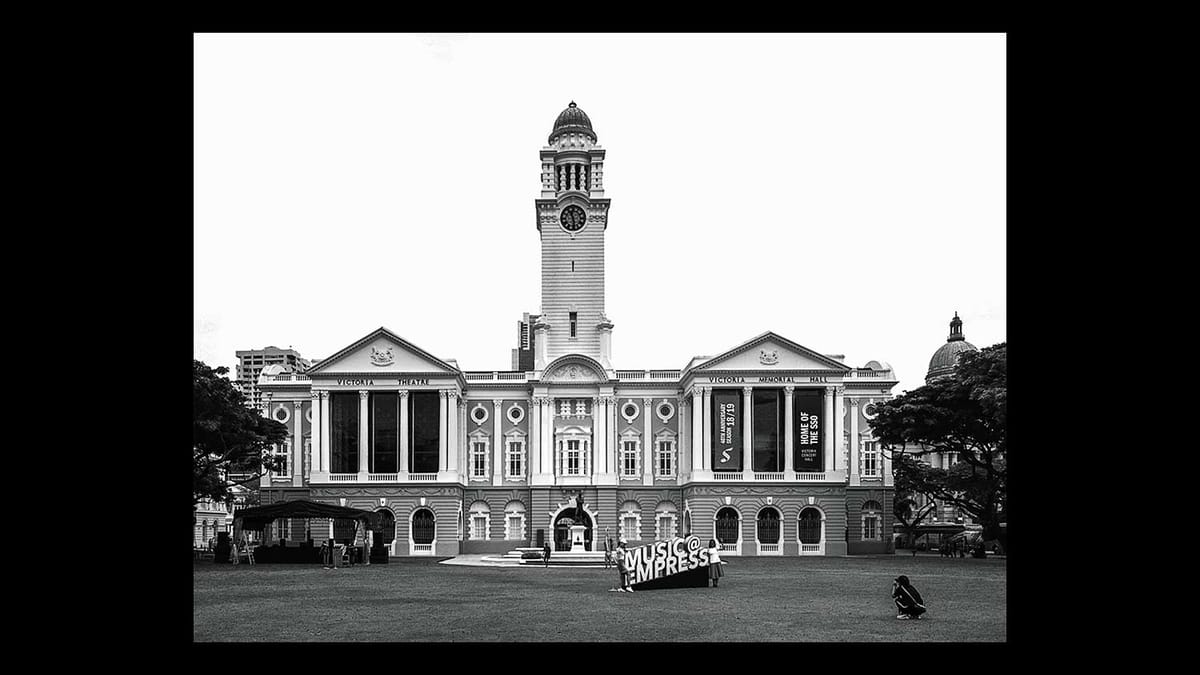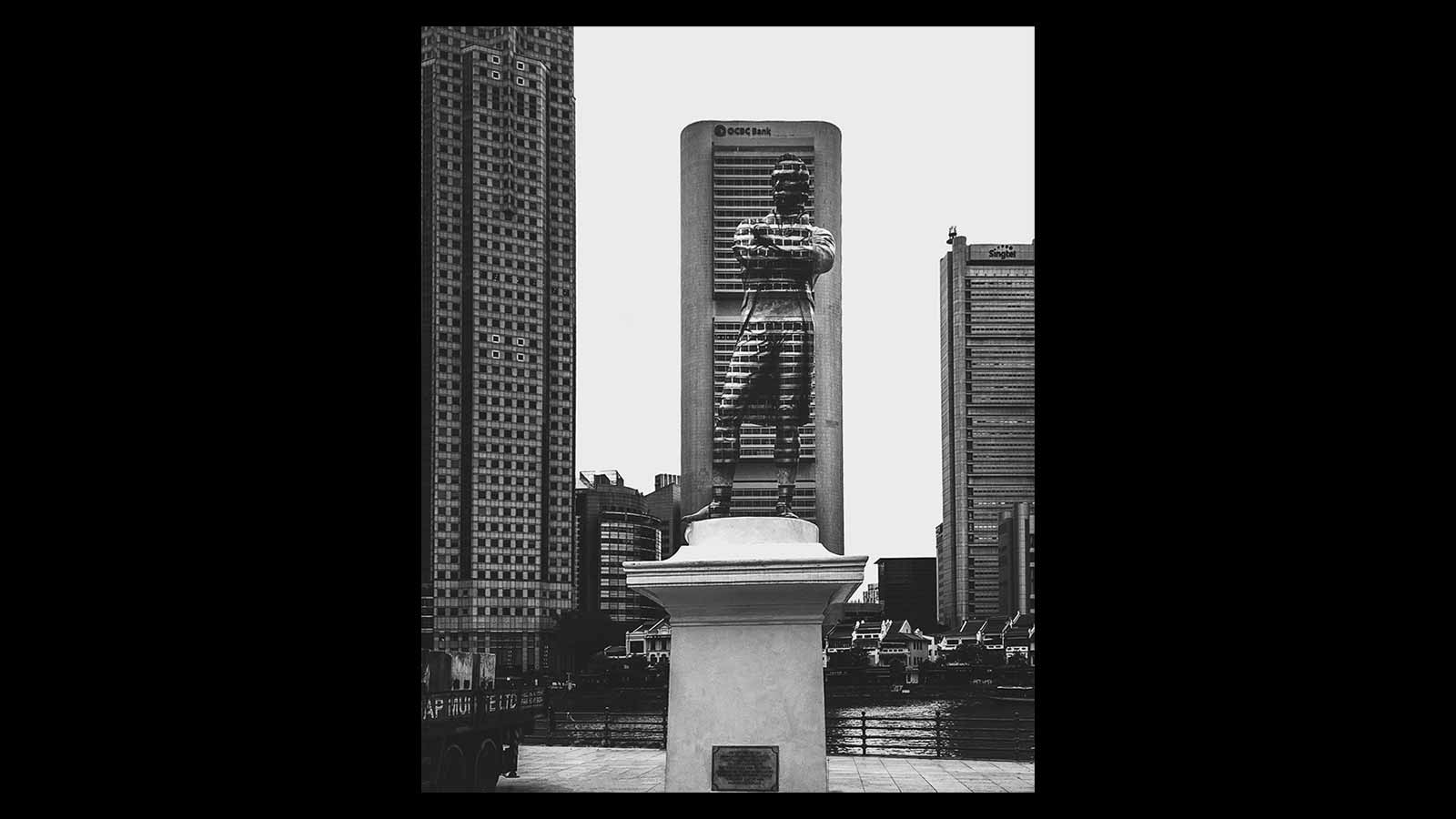Singapore: A Walk in the Padang Area
I stay a distance from the monuments. This is work-hard-play-hard Singapore, and I need a moment to contextualise these sacrifices.

"Is it worship when it's done in a temple built by convict labour?" I cannot help the thought, reading the plaque in the nave of St. Andrews Cathedral. "Inappropriate question," I tell myself and turn my gaze to the stained glass windows, whose colours are blanched in the late-morning light. Five believers sit in the pews, praying, contemplating. A half-dozen photographers prowl the aisles, hunting for a singular shot of the place, bending down to capture the patterned hassocks, also aiming into the high, vaulted roof.
I number among the photographers, but my gear is a mere iPhone today. At a point, I get looks from a pair of cameramen decked with DSLRs. They want the spot I'm on — for their serious cameras. I move toward the better-equipped man there, a khaki-vested Japanese who has three cameras, and who is shooting with the iPhone as well. He returns my smile with an earnest bow, but his deadpan face doesn't change expression.
The cathedral was first designed by George Coleman. Its present form, this lean, tall, pure-white building, was built by Indian convicts in 1861. I want to stay on in its cool interior, but I belong in the streets.
Going south alongside the Padang, on St. Andrews Street, there's on the right the National Gallery. One part of the Gallery used to be the Supreme Court, the other part the City Hall, both ceded now to a higher purpose — the arts. It's a tasteful makeover, for a home that befits the noble pursuit.
These are hallowed stairs. Here's where General Seishiro Itagaki surrendered to Lord Mountbatten at the end of the War. (The Indian General Thimmaiah was present as well.) Again on these steps, in 1965, Lee Kuan Yew declared Singapore's independence.
I come round the Gallery, and there's the Supreme Court up ahead, modern with a concrete flying-saucer on top. A few steps further, there's a compact white neoclassical, with a petite black elephant on a rather high pedestal before it. This is the Arts House. The elephant is a gift from King Rama of Thailand, made when he visited the island in 1871. The Arts House used to be the Parliament House until 1999 when the parliament moved to an extensive accommodation right across.
The exterior of the new Parliament Building is in a corporate-style, prioritising function. It stands by the Singapore River, and there on the promenade I sight scattered tourists. I climb down and rest a moment leaning on the rails. The tourist boats are out. The statue of Raffles beckons me, it appears to have changed.

Raffles's front is covered in stripes. I accept the change as artistic license and try to make a good picture. A local Chinese holding a Fujifilm X-Pro approaches, smiling. He gestures to a marker on the ground. Seen from there, the stripes on the statue align with the lines of OCBC Bank on the far bank. Raffles is now one with that building, plastered on to it — a pleasant illusion.
I walk away from Raffles, following his gaze, and am soon before the Asian Civilisations Museum. The grassy expanse before the museum, running along the Cavenagh Bridge and the Singapore River, is a favourite among tourists. Today, they are taking turns to catch on camera their reflection on three silver globes. A half dozen Germans pass me, see how they can all fit in a single frame on the spheres. They contort into many poses.
On the lawns of Victoria Theatre nearby, an all-black stage is put together for a concert scheduled for the evening. Before the theatre's porch stands a bronze of Stamford Raffles, looking from a height toward the river whence he arrived, as a slick young man. Now, he is revered by Singaporeans — ever grateful to him for seeding their island into a mercantile power.
There isn't a statue of old man Raffles — a brain tumour got him at 45.
In its line of sight, if the statue could see, stands an obelisk built for Marquess Dalhousie who visited Singapore mid-nineteenth century. A memorial to Dalhousie wouldn't find favour back home, where he was Governor-General, where he extended Empire through annexing princely states using a contrivance of his called the Doctrine of Lapse.
My walk ends on narrow Esplanade Park across from Victoria Theatre. Here, a pagoda in Italian marble marks the martyrdom of Lim Bo Seng, who led the resistance to Japanese occupation in the Second War. He was tortured and killed at 34 in 1943. A second memorial, a cenotaph in middle of the park, commemorates Singaporean martyrs from the First War.
I stay a distance from the monuments. This is work-hard-play-hard Singapore, and I need a moment to contextualise these sacrifices.